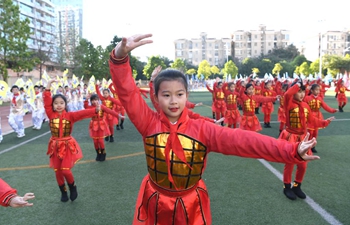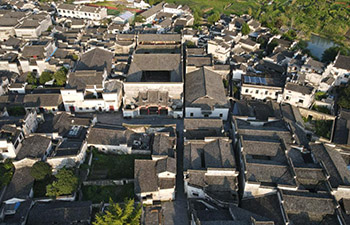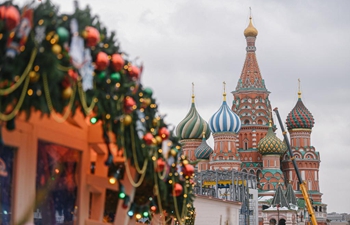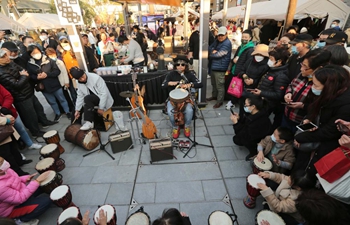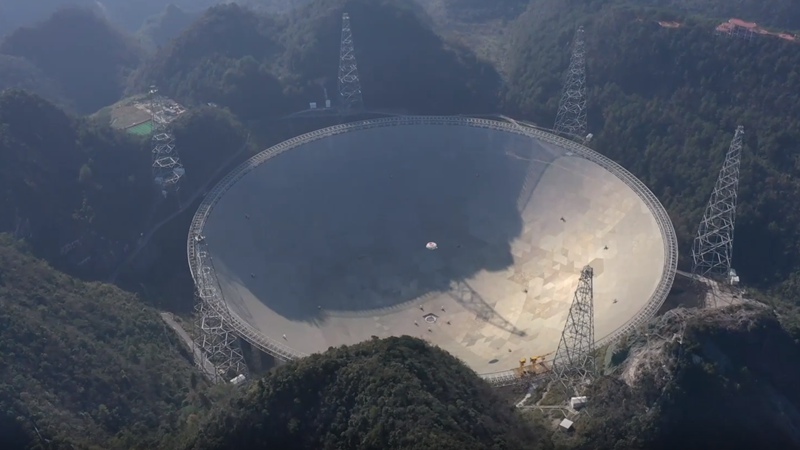BEIJING, May 13 (Xinhua) -- Beijing is rolling out the red carpet this week with thousands of delegates, including more than two dozen heads of state and government, arriving to attend the inaugural Belt and Road Forum for International Cooperation.
In the run-up to the May 14-15 summit, the Belt and Road has became a catchphrase associated with a lot of endeavors. The host city even decorated one of its busiest roads with camel-shaped living sculptures, a token of ancient trade routes that are evolving into modern networks of cooperation in various fields.
But putting fanfare aside, what really is the Belt and Road Initiative? Xinhua consulted policy-makers and academics to answer some of the frequently asked questions about the initiative.
-- What is the Belt and Road Initiative?
The Belt and Road Initiative was proposed by Chinese President Xi Jinping in 2013 to chart out new territories for international cooperation. China invites countries and regions to jointly build the Silk Road Economic Belt and the 21st Century Maritime Silk Road.
Taking its name from the ancient trade routes, the initiative nevertheless concerns more about trade and covers a huge chunk of the world's regions.
The initiative -- an abstract term -- is essentially a new open platform on which countries in Eurasia and beyond can strengthen economic and cultural cooperation to achieve common prosperity.
-- Where exactly is "the Belt" and "the Road"?
Based on archaeological finds, historians have been able to draw ancient Silk Road routes on a map, while economic planners suggest at least five routes of economic cooperation under today's initiative.
Three of them are overland:
-- Northwest, Northeast China-Central Asia-Russia-Europe-the Baltic Sea;
-- Northwest China-Central, Western Asia-the Persian Gulf-the Mediterranean Sea;
-- Southwest China-Indochina Peninsular-the Indian Ocean.
Two are on the sea:
-- Coastal China-the South China Sea-Strait of Malacca-the Indian Ocean-Europe;
-- Coastal China-the South China Sea-the South Pacific.
-- Is it a China-orchestrated strategy?
No. While China proposed the initiative, it does not intend to dictate how it works. The Belt and Road is not China's solo performance but a chorus of all participating countries.
Projects under the initiative follow the principles of "extensive consultation, joint contribution and shared benefits." All emphasize its openness and inclusiveness.
In fact, the name "initiative" instead of "strategy" suggests that its success depends on collaboration. The region does not lack good precedents like the Chiang Mai Initiative, which started as voluntary bilateral currency swaps but eventually became a regional foreign exchange reserve.
-- Does it exclude certain countries?
No. The initiative is not a new version of the Marshall Plan, which gave aid only to American allies. The Belt and Road Initiative, in contrast, is open to all. The vagueness of the initiative's geographical boundaries also helps. No bars are set and countries do not need to negotiate their ways into the initiative.
Over 100 countries, regions and international organizations have responded optimistically to the initiative. China signed cooperation agreements with 40 of them.
-- Are regional integration and free trade zones the goal?
Not necessarily. China is not pushing for regional integration via the Belt and Road platform. Sometimes, the signing of a memorandum of understanding is enough to kick-start a major project or investment.
After all, the Belt and Road is not another Trans-Pacific Partnership or Transatlantic Trade and Investment Partnership. Both were designed as trade agreements, while trade was just one part of the Belt and Road Initiative.
-- Then, what does it entail in practice?
Five areas have been singled out to advance the initiative: policy coordination, facilities connectivity, unimpeded trade, financial integration, and people-to-people bonds.
Though the Belt and Road is more than a trade and infrastructure network, many of the early projects do involve a large amount of infrastructure construction -- roads, rails, harbours, airports, pipelines, and the fiber optic.
Six overland economic corridors have been planned. The most prominent one -- the China-Pakistan Economic Corridor -- has seen rapid progress, with major highway, port, and power projects under way.
The Silk Road Fund and the Asian Infrastructure Investment Bank were set up to bankroll development projects in the region and beyond. Policy banks ramped up lending, while commercial banks opened new branches, and more countries signed currency swap agreements with China.
Cooperation is also being carried out in environmental protection, wildlife preservation, climate change intervention, joint maritime law enforcement, exchanges of culture, arts, and education.
-- What benefits will China get from it?
China has achieved remarkable economic growth over the past four decades on the back of its integration into the global value chain. It has actively sought cooperation with developed nations and made the best of it.
But as China has marched into the rank of mid-income countries, it now needs to explore new territories for international cooperation to help its industries upgrade and economic structure transform.
For many years, inbound foreign direct investment (FDI) was important for an economy rich in labor but poor in capital. That has changed. Outbound direct investment now exceeds inbound FDI.
China's non-financial outbound investment jumped to 170 billion U.S. dollars in 2016. Investment found its way to 164 countries and regions.
Chinese companies now need to explore new overseas markets and the initiative will bring about many new opportunities. A new growth paradigm might emerge.
-- What benefits can other countries get?
To name just a few: money, jobs, better roads and ports, knowledge, and new ways to grow the economy.
Many of the Belt and Road countries are developing countries which need to reduce poverty, improve infrastructure, industrialize, or balance their economy. China can help with its capital, experience, expertise, and talent. The supply-demand match opens great opportunities for collaboration.
This kind of cooperation did exist between China and other countries before the Belt and Road. But there is no doubt the gravity of future cooperation will be tilted to the Belt and Road platform, which has absorbed many existing projects.






